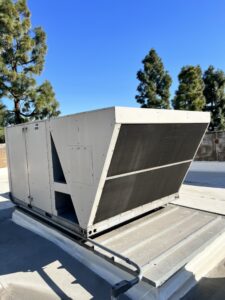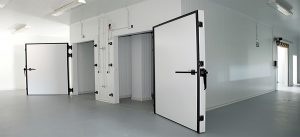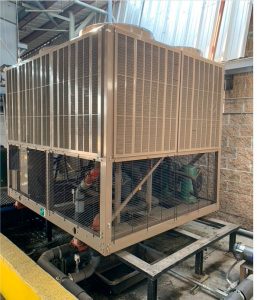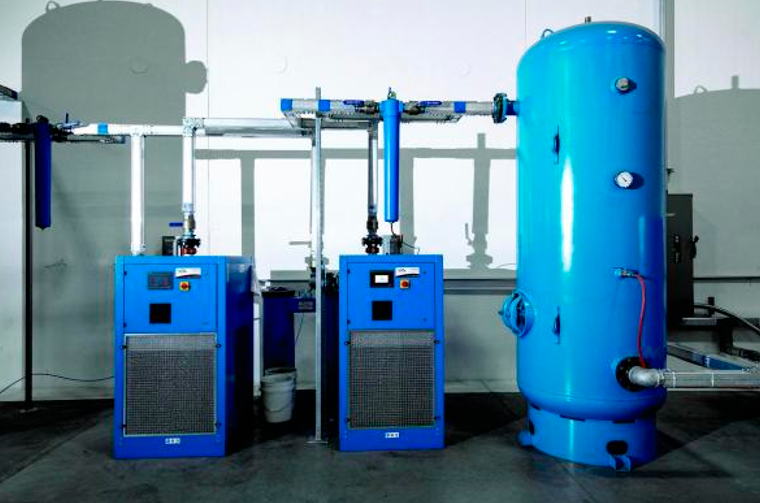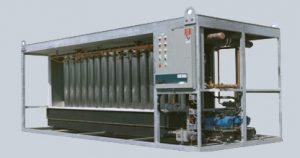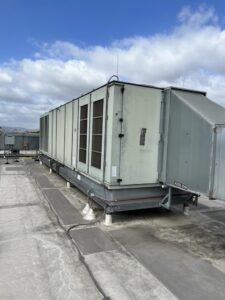Compressed air plays a foremost role in different industrial applications, such as tooling, machines, and implementation. But, the point which is rarely brought up is the quality of the compressed air which is being supplied. If the compressed air is not properly treated, it can have a moist and dirty condition that cause corrosion, decline the performance down and result in operational and equipment problems. This is where desiccant compressed air dryers find their place. This kind of air dryer remove moisture and contaminants, consequently, the air quality, airflow and energy efficiency as well as the performance will be improved greatly in industrial settings.
In this blog, we will analyze the advantages that compressed air dryers can give to the production line in terms of productivity, downtime and reduced energy costs.
Count on us: Swift, Smooth & Efficient Services to minimize downtime
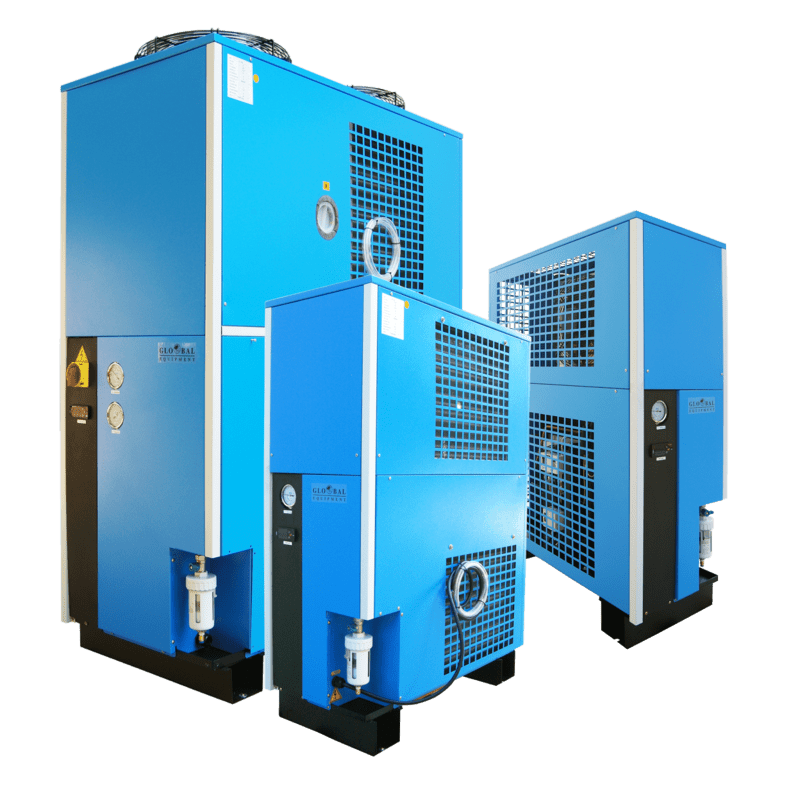
What is a Compressed Air Dryer?
A compressed air dryer is an integral component of a compressed air system, working to eliminate moisture and contaminants from the compressed air before it joins the industrial processes and equipment. Moisture contained in compressed air can be harmful as it can lead to corrosion, reduced efficiency, and operation-related problems. Compressed air dryers efficiently extract water rendering clean air for different industrial uses. In addition, they protect air tools from condensate formation which might result in their destruction and underperformance respectively.
Air dryers that are compressed operate by passing the air through a desiccant or refrigeration system in case of a dryer type. The desiccant system accomplishes this through the use of moisture-absorbing materials like silica gel or activated alumina – this material adsorbs and removes moisture from the compressed air. In contrast, refrigerated air dryers operate by cooling down the compressed air, allowing the water to condense as it separates from the air stream. The dry air is then reheated and again, the temperature is adjusted to maintain the dew point which prevents condensation and moisture-related problems.
The importance of compressed air dryers in keeping air quality and delivering dry air cannot be overemphasized. Such equipment is used in a variety of industrial processes that include painting, pneumatic tools, food processing, and electronics manufacturing, where moisture-free air is a primary requirement.
Understanding Compressed Air Dryers
In order to be able to appreciate the importance of pressurized air dryers a person has to be aware of what they are and how they impact system effectiveness. A compressed air dryer is an equipment that has a sole duty to remove moisture and any other contaminants from the compressed air, and what is left out is deliver only the clean dry air to industrial processes. They are designed to inhibit condensate from building up inside the compressed air equipment, which may result in damage and hampering its performance. It becomes achievable by increasing the airflow and energy efficiency, and therefore a compressed air dryer will help to protect industrial processes, equipment, and thusly, to optimize the overall system performance.
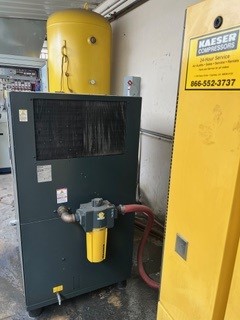
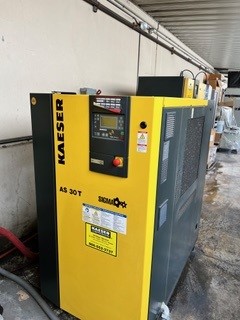
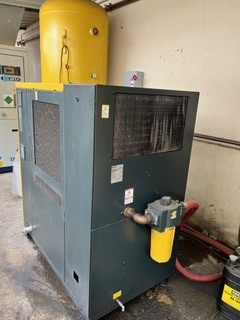
The Role of Compressed Air Dryers in Performance Boosting
Compressed air dryers really do wonders when it comes to the overall efficiency of the whole system of compressed air. Their effectiveness lies in the fact they control humidity and get rid of impurities which leads to improving air quality, airflow, energy efficiency and cutting operational costs.
Ultimately, the compressed air quality for a reliable industrial processes operation and the best performance is the first and foremost goal. Humidity in the compressed air could cause corrosion in the equipment, making them ineffective, reducing efficiency, and negatively impacting the operations. Compressed air dryers are removing moisture to have dry air which goes on sustaining the industrial processes and the equipment without being affected by the moisture, producing a smoother operation with great efficiency.
Secondly, coil air dryers present an advantage of higher airflow and more energy efficiency. Comparing compressed air with moist one can lead to a pressure drop and therefore the flow of air will be reduced and consequently efficiency will be reduced. Water removal in compressed air drying increases air penetration taking a result in better equipment or manufacturers operation. Consequently, demand for compressed air is balanced by a decrease in energy consumption as fewer compressed air is required to achieve the same output.
Besides this, the decision on investing instead of buying a high quality compressed air dryers results in cost reduction in the operational expenses. When air drying is conducted, occasions for structural assistance due to dampness causes are minimized. The moisture safeguarded compressed air dryers from shedding off and thereby enhancing their lifetime, which translates to cost savings.
In its totality, the compressed air dryers improves productivity in industrial settings by ascending air quality, increasing airflow rates, augmenting energy efficiency, and ultimately improving operational economics.
Types of Compressed Air Dryers
For the variety of duties performed by compressed air, there exist several types of compressed air dryers which are available. Each variety is distinct and has distinctive characteristics, benefits, and uses. The type of compressed air dryer to be utilized depends on factors such as dew point requirement, kind of environment and affordable budget.
The following are some commonly used types of compressed air dryers:
- Refrigerated Air Dryers
- Desiccant Air Dryers
- Membrane Air Dryers
- Heat of Compression Air Dryers
- Deliquescent Air Dryers
- Chemical Air Dryers
- Hybrid Dryers
Let’s delve deeper into one of the most popular types – refrigerated air dryers.
Refrigerated Air Dryers
Refrigerated air dryers have cooling systems for removing vapor from the compressed air. They achieve this by lowering the temperature of the compressed air which leads to condensation and a separation of the water from the airstream. The process described above makes it possible that the leaving air has a dew point below minimum system requirements which is essential for avoiding condensation and any moisture related problems.
Refrigerated dryers have features such as energy efficiency, convenient installation and compact design.
Here are some key features of refrigerated air dryers:
- Energy efficiency: Refrigerated air dries are created with an objective of consuming less energy due to the advanced refrigeration conduit and control system. This factor ensures cost savings in energy consumption, which subsequently decreases companies’ operation expenditures.
- Dew point control: Thanks to such air dryers, dew points can be reduced to 35°F and thus they can be utilized in a diversity of industrial applications.
- Cycling operation: Certain air refrigerated dryers feature cycling operation, which enables the dryer to regulate its capacity to match with the compressive air demand. Therefore, the dryer delivers high efficiency as well.
- Easy installation: Easy installation: The refrigerated air dryers are also relatively simple to install and are easily installed with existing compressed air systems. They arrive with the fixed connections, hence, there is no need of connecting them anymore.
- Compact design: Compact refrigerated air dryer tray design ensures optimum space utilization for various applications with limited space. They can only be located in confined areas without affecting their efficiency.
- Refrigerated air dryers are widely used in various industries like food and beverage, pharmaceuticals, automotive and manufacturing, because reliable air drying is critical for the proper performance of these industries. These dry air machines, refrigerated air dryers, are made to deliver dry air which makes these air-powered tools, processes, and equipment efficient and durable.
-
The third part will examine key features like customization tools and supporting needs of compressed air dryers, which business should consider as they are making decision.
Key Features of Compressed Air Dryers
Compressed air dryers being designed with numbers of features and configuration options, their performance can be improved and a business can make a cost effective choice by giving attention as to which one is better among them. Customization opportunities support the process of adjustment to meet individual needs, while regular maintenance provides for routine operation. Creat whitespace around title. Let’s take a closer look at these key features:
Customization Options
Compressed air dryers are multifunctional , which can fit the special application by working with the employees. Customization features are dew-point/pressure/flow rate/etc. Detailed specifications. By customizing air compression drying systems to different requirements, businesses make sure that the processes run without moisture or the machines are unaffected by the moisture or the tools works properly without occupancy of the moisture.
Some common customization options include:
- Dew point control: Business users may select the temperature of the mist that they need, as it is applicable to their case.
- Variable speed operation: The modern dryers with variable speed compressors that increase air demand only minimally and therefore are energy-efficient in operation complete the picture.
- Compatibility with rotary screw air compressors: Compressed Air dryers could be tailored to complement Rotary technology Screw air Compressors, leading to enlarged system efficiency and performance.
- The right customization of the compressed air dryers in your setup can offer you the benefits of higher efficiency, cost savings in terms of energy spends, and low maintenance costs. A good manufacturer/distributor will help you with designing and getting a dryer built in line with your user need(s).
Maintenance Needs
Part of a quality maintenance process of compressed air dryers is their good performance and durability. Maintenance that is done in the proper way ensures smooth operation, it cut risk of time loss and in the long run the running money of the operations will be minimized.
Some key maintenance tasks for compressed air dryers include:
- Regular inspections and cleanings: The periodic checkups and cleaning will help in identifying and treating the root causes of the system before they result to a total failure and high cost repair.
- Filter replacements: Filters are getting rid of impurities and water during the compression process, retaining it inside air compressing system. Replace the filters on a regular basis for the machine to remain efficient and the air to retain the quality.
- Leak checks: By checking for air leaks ensures the compressed air system’s efficiency, which means low energy disappearance and costs.
- In conjunction with a maintenance plan and working with some trained staff, like those from the Ice Bear Corporation, will make sure that any compressed air dryer receives well the care and attention he or she needs to perform his or her best.
The positioning in which the installation of the compressed air piping system (CAP) is carried out always has to be considered, this prevents an imperfect installation process which may result in lousy CAP performance.How to Choose the Right Compressed Air Dryer?
Selecting the appropriate compressed air dryer is vital to achieve the desired objectives concerning the economy, environment, and performance. There is a need of looking into several aspects while choosing a compressed air dryer, such as CFM needs, available installation space, and operation specifications.
Determining Your CFM Requirements
The CFM dryer operating range, or cubic feet of air per minute, that compressed air dryer can process is another parameter. Determining the airflow requirement depends on the regard to your specific application and the size of your compressor system. The drying capacity needed to match the dryer and the CFM needs for a proper functioning of the air handler equipment is of great importance enabling energy reduction and better performance.
Consider the following when determining your CFM requirements:
- Application air flow requirements: Calculate the airflow for your actual process taking into consideration the amount of compressed air that will be fed to the air tools and other powered equipment in the plant.
- SCFM, or standard cubic feet per minute: SCFM denotes the volume of air at standard conditions which correlate to 68°F and 14.7 psi around the atmosphere. Make certain that the air compressor model you would acquire, can deal with the required SCFM of your application.
- Pressure drops: Accounting for pressure loss where correct flow values or CFM are estimated, since it determines the efficiency and effectiveness of the air system.
- Accurately establishing your CFM needs allows you to select the dryer, which meets the air flow requirements of your manufacturing processes, without over consuming the power and also the performance will be optimized.
Understanding the Available Space for Installation
It is important to consider the layout of the room when you pick an air compressed dryer. The space required by the equipment has to fit. The kind and layout of compressed air dryers should be in line with the allocated space that is already available at your premises, likewise; meanwhile, such operation will remain smooth and in the long run there will be the effective utilization of limited areas.
Here are some points to consider when evaluating installation space:
- Assess available space: Calculate the length of the 40 yard running back and fitness area where the compressed air dryer is to be set.
- Compact design: When things are limited to space, give condense compressed air dryers that are fit to the place.
- Compatibility with compressor: Ensure the installation of a compressed air drier that has a size enough and a performance that fits the air compressor.
- Future expansion: Look forward at further expansion plan which offers additional space to upgrade or modifying anything if required.
- The positioning in which the installation of the compressed air piping system (CAP) is carried out always has to be considered, this prevents an imperfect installation process which may result in lousy CAP performance.
Considering the Environment and Operating Conditions
Operating conditions and working environment considerably impact efficiency and performance of compressor air dryer. It should be carefully weighed whether these factors affect energy consumption and operational costs by monitoring first what causes them.
Consider the following when evaluating the environment and operating conditions:
-
- Temperature and humidity: Pick a compressed air dryer that identifies the temperature and humidity that is in your area and also consider the level of the moisture that it can be able to handle. The dryer examples can be applied to the moderate and low humidity conditions respectively. The refrigerated air dryers will work fine in a moderate atmosphere while desiccant dryers will be suitable for this type of weather.
- Industrial processes: How about the mode of your industrial processes and what moisture can interfere in the methods you use for precision and quality? There should be a compressed air dryer that can produce some satisfactory air enough for accurate air conditioning
- Heat exchange technology: Sometimes air driers ,which work mobile, apply the heat exertion technique depending on the heat transferring at the dehumidification stage. This results in more energy efficient and better performance.
- Energy consumption: The type and effectiveness of several compressed air dryers should be recognized along with how these are compatible with each operating conditions in order to quit costly production in the future.
-
Through the selection of the environmental and operative conditions, the companies have an opportunity to consider the most suitable dryer, which is optimal in the use of energy, air quality and overall performance of the system.
Installation and Maintenance Services by Ice Bear Inc.
Understanding the Importance of Compressed Air Dryers:
Compressed air drying has pivotal significance in various industries of the industry world as it keeps the efficiency of pneumatic tools and equipment that may suffer through compromising their lifespan. Ice Bear Inc. represents the perfect brand in delivering the most dependable and tailor made compressed air dryers irrespective of the businesses requirements distributed through different industry lines.
Installation Excellence:
Installation of the compressed air drying process which will be successful starts with proper installation. Our people at Ice Bear Inc have the know-how to handle special details related to the blower installation so as to obtain the best performance and to save as much energy as possible. From identifying the best place for the installation to making sure that all connection points are done in line, their installation services create a foundation for the future increases the reliability of electricity in the long run.
Maintenance Best Practices:
Keeping compressed air dryers function sluggish-free is vital and its routine maintenance is a must. Ice Bear Inc does a routine maintenance of systems and components to prevent small problems from taking a major effect. Enlisting for filter replacement, watching for leaks, having the valves inspected, and the pressure level monitored is also part of this exercise. The `prompt` timeliness of maintenance can not only guarantee supplies of dry air steadily but also lengthen the life span of the equipment as well.
Troubleshooting and Repairs:
Also with combative maintenance there is an opportunity that something is going to break. our trained technicians at Ice Bear Inc will receive and rectify compressed air dryer complications pronto. The repair services they provide are tailored to solving moisture carry-off issues, dealing with pressure fluctuations, and replacing old components. Their services aim at shortening the downtimes and bring the equipment back to the best operating condition.
Energy Efficiency and Cost Savings:
Truly striving towards Ice Bear Inc‘s mission of aiding companies to set energy goals. The air dryers with compressed air technology we put together to emit less energy in totality is aimed at cutting cost of energy with time, and these savings will bring amazing results.
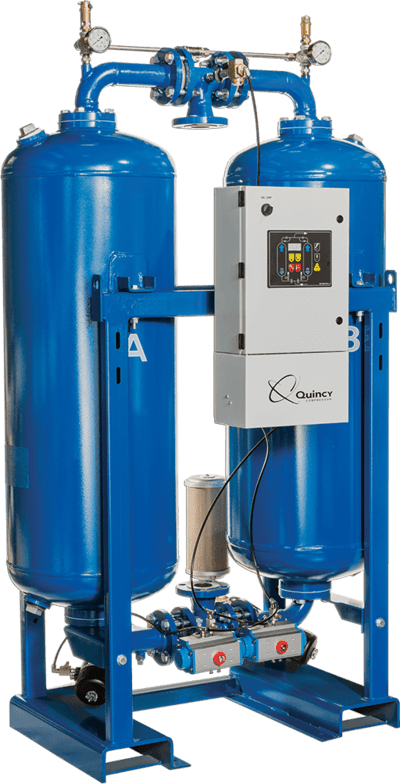
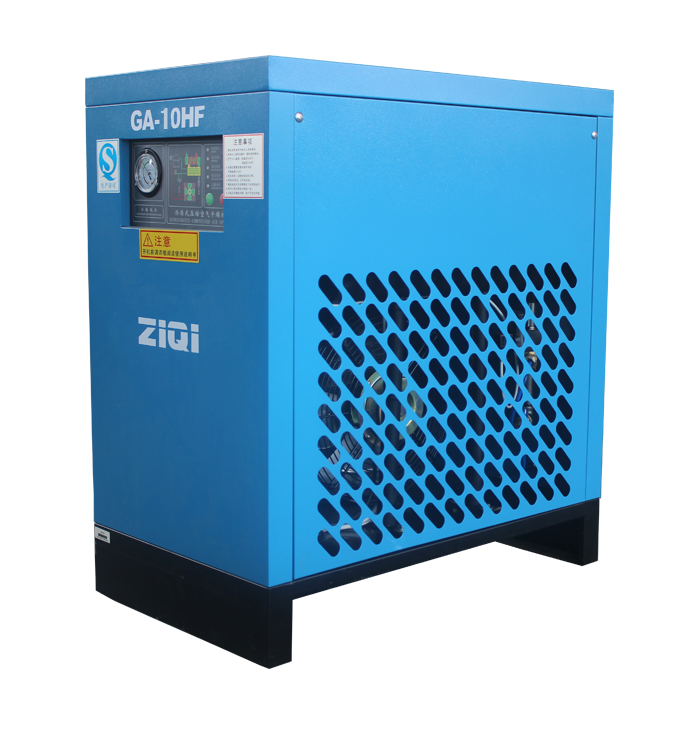
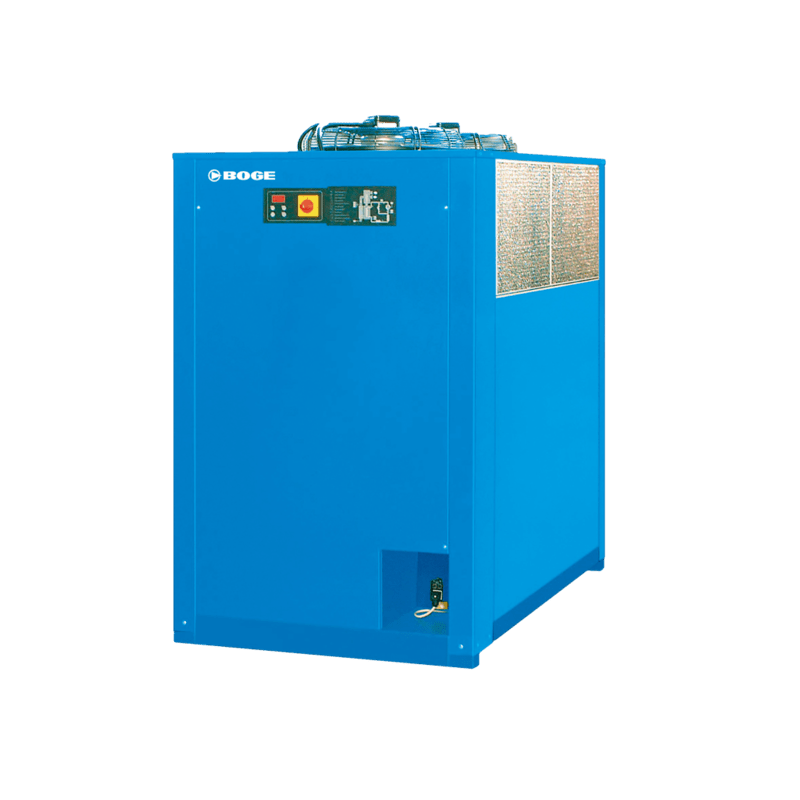
Proper installation and maintenance are vital for the reliable operation and performance of compressed air dryers. Ice Bear Inc. offers professional installation and maintenance services to ensure that your compressed air dryer functions optimally throughout its lifespan.
Professional Installation of Compressed Air Dryers by Ice Bear Inc.
Technicians of Ice Bear Inc. are expert specialists in installing compressed air dryers in a professional way. An optimal performance and a long life for the dryer, as well as a secure facility and personnel, are all dependent on proper installation.
The installation process includes:
- Proper placement: Our technicians will decide the right the best place for the air dryer, taking into account aspects like accessibility, air line layout, and future expansion.
- Connection: The dryer will be connected to the compressed air system, thereby avoiding air clog and maintaining the efficiency.
- Calibration: Technicians will calibrate the dryer to be matched against the designed dew point and operational specifications by the client.
- Piping: The optimized compressed air piping layout will be designed to provide the most efficient airflow and lowest pressure drop.
- Ice Bear Inc. makes sure that safety regulations and industry standards are fully observed during installation giving you confidence that you have a reliable compressed air dryers system.
Regular Maintenance Services for Optimal Performance
In addition to installation services, Ice Bear Inc. also offers the services of maintenance the systems that are used for compressed air drying in order to maximize the performance and energy efficiency.
Regular maintenance includes:
- Filter replacements: Filters capture moisture and impurities so that they cannot be inhaled by workers through compressed air. The application of this approach means uninterrupted operation and eventually spending less.
- System cleaning: Regular cleaning of the compressed air dryer system will eliminate dust and other particles from the system, thereby allowing it to operate reliably while producing clean air.
- Performance testing: The technicians from Ice Bear Inc. will do a performance test of the compressed air dryer system to determine the efficiency of the system and identify any problematic areas or possible issues.
- Through the implementation of planned maintenance schedules, companies can not only increase the life span of their compressed air dryers, but also preserve acceptable air quality and lessen expenses resulting from downtime and repairs.
In the realm of compressed air systems, Ice Bear Inc. stands as a reliable partner for businesses seeking excellence in maintenance, installation, and repair services. By following best practices and utilizing cutting-edge technologies, Ice Bear Inc. contributes to the seamless operation of compressed air dryers, ensuring that businesses can rely on a clean and efficient supply of compressed air for their operations. If you’re looking to optimize your compressed air system, Ice Bear Inc. is the name to trust.

